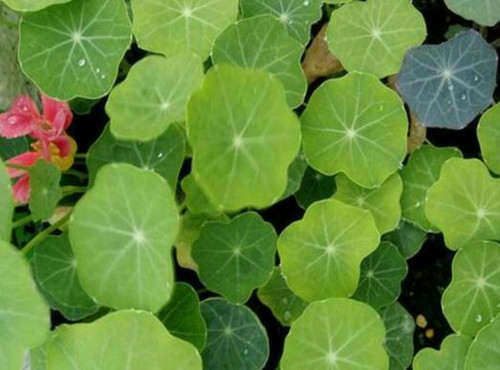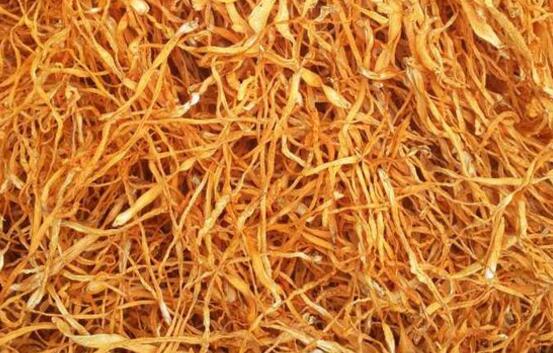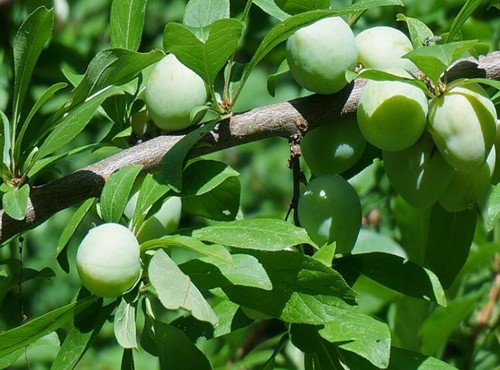How much is the seed price per jin? How do you plant it? What are the planting methods?
Golden lotus can be cultivated perennially in southern China, while in North China it is sown in autumn and cultivated indoors in pots, which is used as a spring flower to make it blossom during New Year's Day and Spring Festival. Because of its fragrance and bright colors, it has won the love of people. So, how much is the seed price per jin? How do you plant it? What are the planting methods? It is understood that the price of dry lotus seeds is 75 yuan per jin, and the price will be different in different regions.

How to plant the seeds of Clematis paniculata?
Seed soaking and sprouting of Clematis paniculata
1. Seed treatment: because the seed coat is relatively thick, soak the seed in warm water (about 40 ℃) or cold water for 12 hours before sowing, peel off the outer skin of the seed, and then soak for another 12 hours.
two。 Seed sprouting: take clean, fragrant paper towels, fold 6-8 layers, put them in a small plate, moisten them with pure water (with paper towels wet thoroughly), gently press the soaked seeds in the middle of the paper towels, then put the small plate into a transparent food bag and tie it tightly, ventilating for 15-30 minutes a day.
3. Sprouting and sowing: the seeds germinated with paper towels will generally crack and expose the bud tip within 2-7 days, and when the bud tip is 2 mm, it can be planted in the soil. The cotyledons will break out 2-5 days after the soil, and when the cotyledons are fully expanded, they will be able to accept full light.
Sowing time of Clematis paniculata
1. Spring sowing (East China): the high temperature in summer is not suitable for the growth of Clematis, so spring sowing should be early. It can accelerate bud from early February to early March, bud in 30-35 days after budding, and blossom in 40-45 days. Spring sowing is characterized by broad leaves, slender stem nodes, less flowering than autumn sowing, short flowering period and less seed setting. Spring sowing has a short growth cycle, so it is more suitable for beginners.
two。 Autumn sowing (East China): autumn sowing of Golden Lotus is carried out from late September to early October, and the flowering period is from February to March of the following year. Autumn sowing is characterized by thick leaves, stout branches, compact plant type, short stem nodes, many flowering, long flowering period and full seeds. Because of the long growth cycle, autumn sowing tests the patience and planting skills of flower friends.
Sowing method of Clematis paniculata
1. Sowing and raising seedlings: the optimum temperature for germination is 18-20 degrees. Soak the seeds in 40 ℃ water for 1 day before sowing, keep the temperature at 18-20 ℃, and germinate for a week. Sow on demand, cover about 1 cm of soil, water thoroughly and keep moist, sprout for 7 days. 2-3 true leaves when picking the heart on the pot, properly arrange the leaves and branches are conducive to ventilation, so that the flowers exposed.
two。 Planting elements: like warm, humid, sunny climate. Resistant to half shade, not resistant to drought, not resistant to waterlogging, not resistant to cold, overwintering temperature should not be lower than 10 degrees. The soil has strong adaptability and grows well in sandy soil which is well drained and rich in organic matter. Flowers and leaves have a strong phototaxis and are often turned into pots during cultivation.
What are the planting methods of Clematis paniculata?
1. Soil: perennial cultivation in the south and annual baking or pot planting in the north. In pot cultivation, it is appropriate to choose the culture soil mixed with 4 points of rotten leaf soil, 4 points of garden soil, 1 part of compost soil and 1 part of sand soil.
two。 Watering: dry golden lotus likes to be wet and afraid of waterlogging, and the soil moisture is maintained at about 50%. During the growth period, small water should be watered frequently, watering once every 2-3 days in spring and autumn, watering every day in summer, and spraying water on the leaves in the evening to maintain high humidity. After flowering, it is necessary to reduce watering to prevent branches from growing. If excessive watering and poor drainage, the roots are vulnerable to wet rot, and the light ones with yellow leaves fall off heavily and the whole plants wilt and die.
3. Fertilization: during the growth period, if the fertilizer and water are not well managed, it is easy to have long leaves and yellow nodes, small stems and fine leaves, or luxuriant branches and leaves but few flowers. For this reason, it is not suitable to apply too much nitrogen fertilizer to avoid excessive growth of branches and leaves. In the process of growth, 15% thin rotten cake fertilizer and water with a concentration of 15% are generally applied every 3-4 weeks, and nitrogen fertilizer is stopped during flowering, and 0.5% superphosphate is applied once every half a month, which can make the leaves green and bloom luxuriantly. After the flower fade, the fertilizer and water of mature cake with a concentration of 25% was applied once to supplement the nutrients consumed by flowering. The hot weather in summer should stop fertilization and apply compound overwintering fertilizer again at the end of autumn in order to enhance the cold resistance of the plant and lay a good foundation for the growth of the following year. After each fertilization, attention should be paid to loosen the soil in time to improve the air permeability of basin soil and facilitate the development of root system.
4. Lighting: Hanjin Lianxi needs enough light. Direct sunlight is not acceptable in summer and placed in a cool and well-ventilated place. North China is put indoors in mid-October, where the sun can shine. The dry lotus will grow with the light, and the plant should be turned constantly to receive uniform light.
5. Temperature: the most suitable temperature is 18-24 ℃, afraid of high temperature, too high temperature in summer is not easy to blossom, higher than 35 ℃ slow down or stop growing. Golden lotus is not resistant to cold, 0 ℃ can only survive in a short time, and the winter temperature should be higher than 10 ℃ to facilitate overwintering. When the winter temperature is controlled at 12-16 ℃ and suitable fertilizer and water, the growth of Clematis can be maintained.
6. Shaping and pruning: in order to make the leaves fat and beautiful, it is also necessary to set up a bracket at the right time to tie the vine stems evenly on the bamboo frame so that all the leaves face in one direction. The size of the frame is suitable for the full growth of vine leaves in the later stage of growth. With the growth of the vine stem, tie it in time, and pay attention to make the vine stem evenly distributed on the support, so that the flowers can be evenly distributed. In order to promote its more branches and achieve the purpose of more leaves and flowers, coring should be carried out in addition to the main branches and sturdy lateral branches before putting on the shelf.
7. Propagation: Nelumbo nucifera is often propagated by sowing, cutting or dividing plants. Spring sowing in the north and autumn sowing in the south. During spring sowing, the seeds should be soaked in 40-45 ℃ warm water for 1 day, then kept for 18-20 ℃ after sowing. After 1-2 weeks, the seeds could germinate. After transplanting, the seeds were planted in the open field or pot in May. Autumn sowing was carried out in the greenhouse from August to November, and overwintered in the low-temperature greenhouse after emergence. Cuttings are generally carried out in spring or autumn. If there is a heating bed, cuttings can also be done in winter. The method is to take the tender stem as cuttings, leave 3-5 buds in each cuttage, remove the lower leaves, insert them into the sand bed, and then shade them. Under the condition of 10-15 ℃, they can take root in about 2 weeks. The split-plant method is often used in South China to propagate. After flowering in summer, the dormant Trollius is placed in a dark and moist place without management. At the beginning of October, many old stems send out new seedlings, from which some new plants with roots are divided and planted separately. Using general management measures, it can blossom before the Spring Festival.
8. Pests: Golden lotus is rarely infected with diseases and insect pests, the disease generally has leaf moths, which will make the leaves roll up or fall off, in addition, there are aphids and whitefly, which can be controlled by spraying. Diseases generally include mosaic disease and ringspot disease, which can be sprayed with insecticides to control aphids, clean up surrounding weeds, pull up infected plants and burn them.
The efficacy and function of Clematis paniculata
1. Nelumbo nucifera leaves with beautiful fat flowers, leaves shaped like bowl lotus, round shield-shaped alternate with long stalks. The flower shape is peculiar, axillary is trumpet-shaped, the stem is soft and beautiful, and the leaves and flowers have high ornamental value.
two。 Dry golden lotus golden bright, refreshing taste, with heat-clearing and detoxification, nourishing yin and reducing fire, nourishing yin and heat and fire sterilization, long-term drinking can clear pharynx and moisten throat voice.
Time: 2019-03-21 Click:
- Prev

Cordyceps flower (Cordyceps militaris) how much is a catty? What are the ways to eat? What's the effect?
Cordyceps flower is not a flower, in fact, Cordyceps militaris fruit body, also known as Cordyceps militaris or Cordyceps militaris, common name is not old grass, insects, bacteria combined with medicinal fungi, modern rare Chinese herbal medicine. So how much does cordyceps cost? What are the ways to eat? What's the effect? What is cordyceps flower, not cordyceps fruiting body
- Next

When does the green plum tree blossom and bear fruit? How do you plant it?
Green plum trees are produced in Hainan. Born in hills and sloping forests, below 700 meters above sea level. Vietnam, Thailand, Philippines, Indonesia and so on have distribution. It is an endangered species under national third-level protection. So, when will the green plum tree blossom and bear fruit? How do you plant it? It is understood that green plum trees bloom from May to June and fruit from August to September.
Related
- Fuxing push coffee new agricultural production and marketing class: lack of small-scale processing plants
- Jujube rice field leisure farm deep ploughing Yilan for five years to create a space for organic food and play
- Nongyu Farm-A trial of organic papaya for brave women with advanced technology
- Four points for attention in the prevention and control of diseases and insect pests of edible fungi
- How to add nutrient solution to Edible Fungi
- Is there any good way to control edible fungus mites?
- Open Inoculation Technology of Edible Fungi
- Is there any clever way to use fertilizer for edible fungus in winter?
- What agents are used to kill the pathogens of edible fungi in the mushroom shed?
- Rapid drying of Edible Fungi

